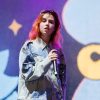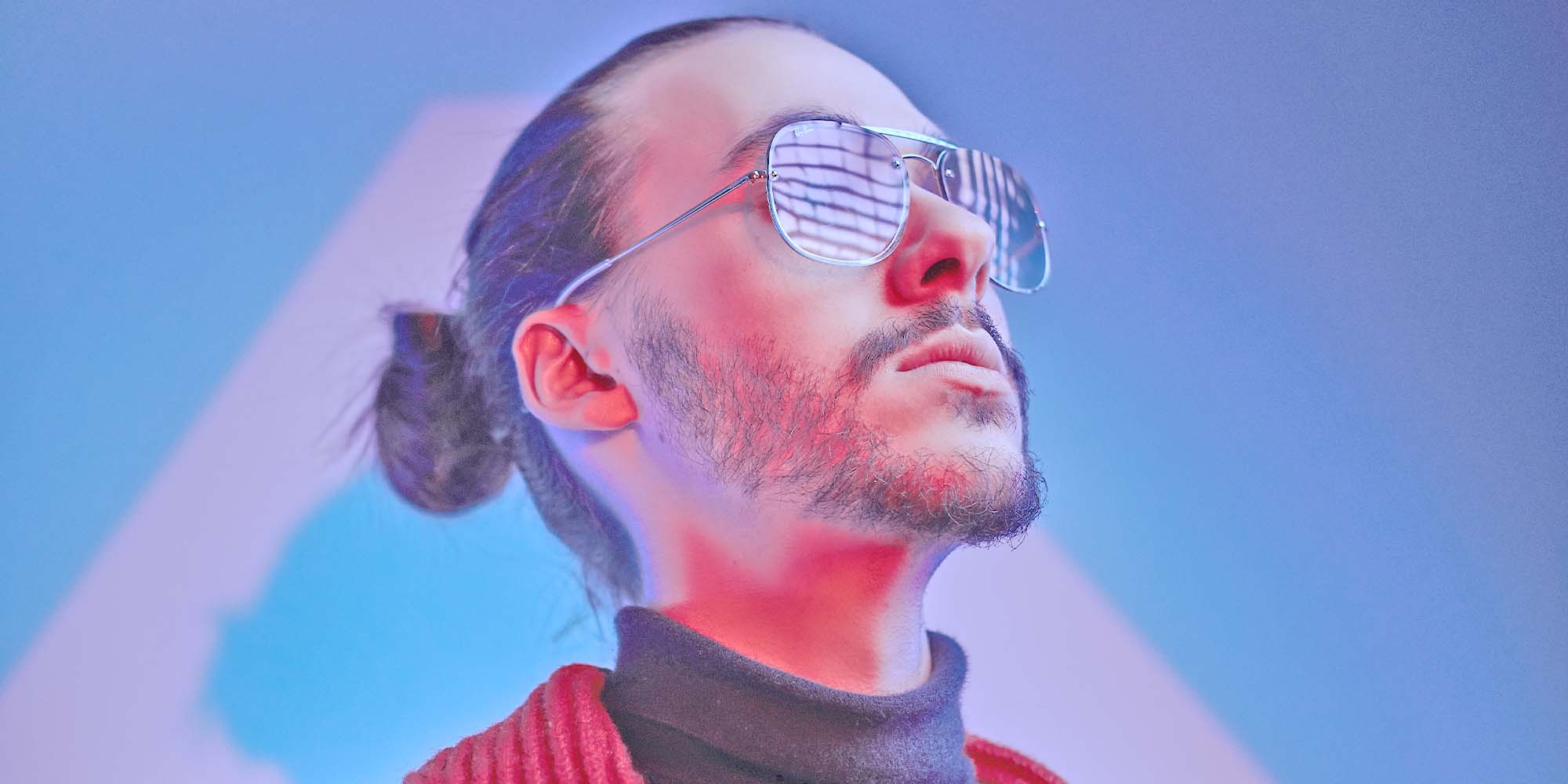-
 play_arrow
play_arrow
DisnDat HITZ DisnDat HITZ
-
 play_arrow
play_arrow
Warlando Hitz Warlando Hitz
-
 play_arrow
play_arrow
DisnDat Tunez Reggae,Dancehall and Afro Beats

For a certain generation of Black kids — the ones who still remember recording songs off the radio with blank cassette tapes — anime didn’t arrive through old manga volumes or imported VHS tapes. It crash-landed into our lives every afternoon on Cartoon Network, wrapped in the spacey, metallic branding of Toonami.
If you were a millennial with half an ear to hip-hop and half an eye on after-school TV, Toonami wasn’t just a programming block. It was a portal to some of the greatest moments and stories ever told that you’ve ever seen throughout your young adulthood. Personally, my finger was often on the remote during commercials, flipping between Goku finally landing on Planet Namek and music videos on BET’s Rap City. But Toonami was appointment television.
Through shows likeDragon Ball Z, Sailor Moon, Gundam Wing, Cowboy Bebop, Yu Yu Hakusho, and more, we found worlds that didn’t look like ours but somehow felt like ours — full of underdogs, hustlers, and warriors grinding against the odds. The connection between hip-hop and anime was hard to explain back then, but it didn’t really have to be. It was instinctual, and it quickly became a fixture of the culture.
Part of what made the connection feel so natural during the time was that Toonami itself moved like hip-hop. It wasn’t just the shows, but it was the overall atmosphere. The spacey visuals, the grainy low-end beats under every bumper, with the laid-back voice of T.O.M talking slick between commercials. It felt closer to a mixtape than a TV block. Toonami also didn’t feel the need to talk down to us watching, but instead trusted the audience to catch the rhythm, attitudes and stakes between the bumpers. Toonami earned our trust as an audience by understanding the youth culture it was targeting.
But it wasn’t just Toonami’s aesthetic that locked us in. It was the way these shows treated things like ambition. Goku didn’t want to win tournaments just to win — he trained until his body broke down because he needed to be stronger tomorrow than he was today. He fought for his friends, his family, his planet. You didn’t need a crash course in Eastern philosophy to understand that. There was no need to translate the idea of leveling up. There was no need to explain why a fighter would yell and scream just to push past a wall that felt permanent. We already knew what that was. Anime, at least the anime that mattered to us, was about labor and effort. It was about keeping your head up, which feels so ingrained within our own culture.
So when hip-hop started openly embracing anime, it didn’t feel like a crossover event — it felt like something inevitable. RZA had already cracked the code by the mid-’90s with Wu-Tang, turning kung fu flicks into rap mythology. For many in the new millennium, that honor belongs without a doubt to Lupe Fiasco. One of the first anime references I remember hearing in a song came from Lupe on the 2005 Kanye West single, “Touch the Sky” — “Guess who’s on third, Lupe steal like Lupin the Third.” Kanye’s anime influence would become even more prominent on his follow-up album, Graduation, which featured heavy nods to Katsuhiro Otomo’s Akira in the video for “Stronger,” along with an anime-inspired video for “Good Morning,” based on album artwork created by Takashi Murakami.
The floodgates opened after that, with anime references pouring in from all our favorite rappers and singers. Lil Uzi Vert (“New Patek”), Ski Mask the Slump God (“Lost Souls”), Isaiah Rashad “Wats Wrong”), Frank Ocean (“Pink Matter”) and more, all proudly wove anime into their work. Soon, hip-hop would recognize anime as kin. Anime would become another lens through which we could talk about struggle, ego, power and loss.
But if there’s one rapper who took the connection further, it’s Megan Thee Stallion. She doesn’t just name-drop her favorite shows — she embodies them. Whether it was cosplaying as Shoto Todoroki (aptly titling herself as Todoroki Tina) from My Hero Academia, dressing as Sailor Moon for a trip to Tokyo, or flexing her love for Naruto, One Piece, Jujutsu Kaisen and JoJo’s Bizarre Adventure on social media and in songs (“BOA”), Megan made anime a part of her whole identity as a superstar. It isn’t performative either — you can tell she is a genuine fan, talking about her favorite characters and arcs the same way any of us would. She shows that anime isn’t just something Black kids liked growing up, it is something we could proudly carry into adulthood, into our art, into our full selves.

Effie Wambui, wearing a costume of character Jotaro Kujo from Japanese manga JoJo’s Bizarre Adventure, poses after attending the cosplay contest at Japan Information and Culture Centre in Nairobi, on December 9, 2017.
Photo by YASUYOSHI CHIBA/AFP via Getty Images.
Cosplay naturally grew right alongside anime’s explosion in the Black community, even if the road wasn’t always smooth. For a long time, Black cosplayers faced gatekeeping and subtle (and not-so-subtle) racism at conventions and online, getting questioned or criticized for embodying characters who weren’t “supposed” to look like them. But, like everything else, we flipped the narrative. Black cosplayers showed up as whoever they wanted — storming into anime cons dressed as Naruto, Sailor Scouts, JoJo’s Bizarre Adventure characters — and brought their own flavor to the scene. Today, the presence of Black cosplayers is vibrant, undeniable and essential to the culture.
Now we’ve created spaces of our own, with conventions like Blerdcon and RDCWorld1’s DreamCon — a Black-owned anime convention that draws thousands every year. These gatherings aren’t just about celebrating anime; they’re about celebrating the way we experience, remix, and build community around it. The cosplay meetups, rap battles, artist alleys, gaming tournaments, and panel conversations all feel like they could only happen in our world. They’re proof that the connection between hip-hop, Black culture, and anime isn’t just alive — it’s thriving.
Anime has been global for decades — but hip-hop, and Black culture specifically, gave it a second home. A second life. We didn’t just watch anime. We absorbed it, broke it down, flipped it, and remixed it the same way we’ve always done with the things we love. We turned favorite characters into metaphors, favorite storylines into survival tactics, favorite battles into anthems. Anime became another language we spoke — one rooted in ambition, struggle, and reinvention.
From Your Site Articles
Related Articles Around the Web
Written by: jarvis
Similar posts
-
Recent Posts
- 50 Cent Uses AI to Troll Diddy as Every Member of Puff’s Jury
- Clairo Has Been Forced To Drop Out Of Primavera Sound 2025
- Kendra Wilkinson Speaks On Moving Into Playboy Mansion At 18! Opens Up About Sex With Hugh Hefner & Survival Mode
- Bad Bunny Facing Copyright Lawsuit Over ‘Enséñame A Bailar’
- Anime and Hip-Hop Have Always Been Speaking The Same Language
Recent Comments
Featured post
Latest posts

50 Cent Uses AI to Troll Diddy as Every Member of Puff’s Jury

Clairo Has Been Forced To Drop Out Of Primavera Sound 2025

Kendra Wilkinson Speaks On Moving Into Playboy Mansion At 18! Opens Up About Sex With Hugh Hefner & Survival Mode

Bad Bunny Facing Copyright Lawsuit Over ‘Enséñame A Bailar’

Anime and Hip-Hop Have Always Been Speaking The Same Language
Current show

Frequency One
Mixed by Dj Monster
For every Show page the timetable is auomatically generated from the schedule, and you can set automatic carousels of Podcasts, Articles and Charts by simply choosing a category. Curabitur id lacus felis. Sed justo mauris, auctor eget tellus nec, pellentesque varius mauris. Sed eu congue nulla, et tincidunt justo. Aliquam semper faucibus odio id varius. Suspendisse varius laoreet sodales.
closeUpcoming shows

Pop’n Roll
Mixed by Rebecca Lost
11:40 pm - 11:55 pm
Orlando Sessions
Presented by DISNDAT
11:55 pm - 12:00 am
ChillBeats
Presented by Monica Deep
12:00 am - 5:00 am
Good Morning London
With Cindy and Brandon
5:00 am - 6:00 am
ACCOUNTABILITY W Mr. STROKEMWELL
Fuck How You Feel
6:00 am - 8:00 amChart
-

Frequency One
Mixed by Dj Monster
For every Show page the timetable is auomatically generated from the schedule, and you can set automatic carousels of Podcasts, Articles and Charts by simply choosing a category. Curabitur id lacus felis. Sed justo mauris, auctor eget tellus nec, pellentesque varius mauris. Sed eu congue nulla, et tincidunt justo. Aliquam semper faucibus odio id varius. Suspendisse varius laoreet sodales.
close Chart
-
Top popular

Female Corrections Officer Who Got Smashed In Front Of 11 Inmates… Wants You To Bail Her Out! (6 Sec IG Message)

Music, Economics, and Beyond

Tragedy Unfolds At Rock Hill Smoke Shop! Aftermath Shows Witness Fighting To Save One Survivor After 2 Fatally Shot & 1 Critically Injured Inside

Geez, Wait Till You See It From The Back: Recoil Like A Mac10 With No Attachments!

Stainless Steel Juicer – Making Juicing Fun And Easy
Quick links
Our radio.
COPYRIGHT All rights reserved.
Site Design by Superior Business Solutions.











